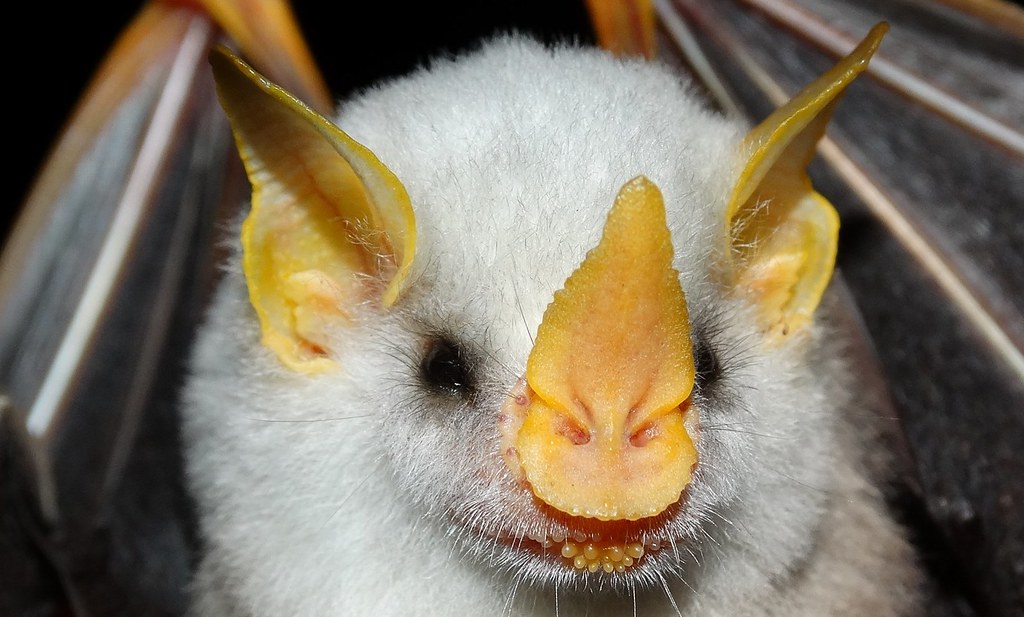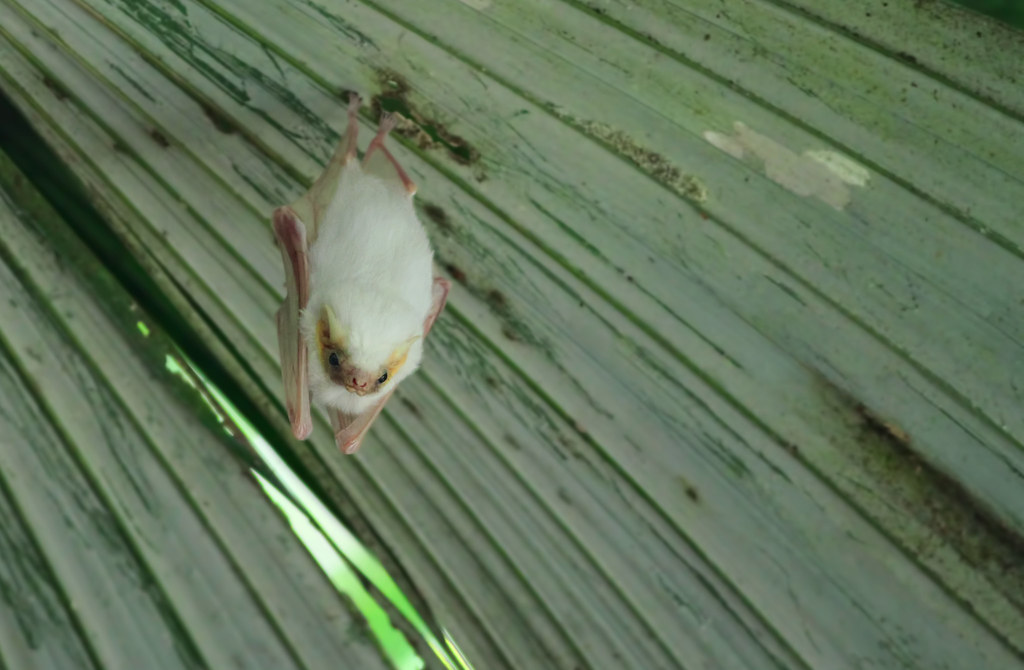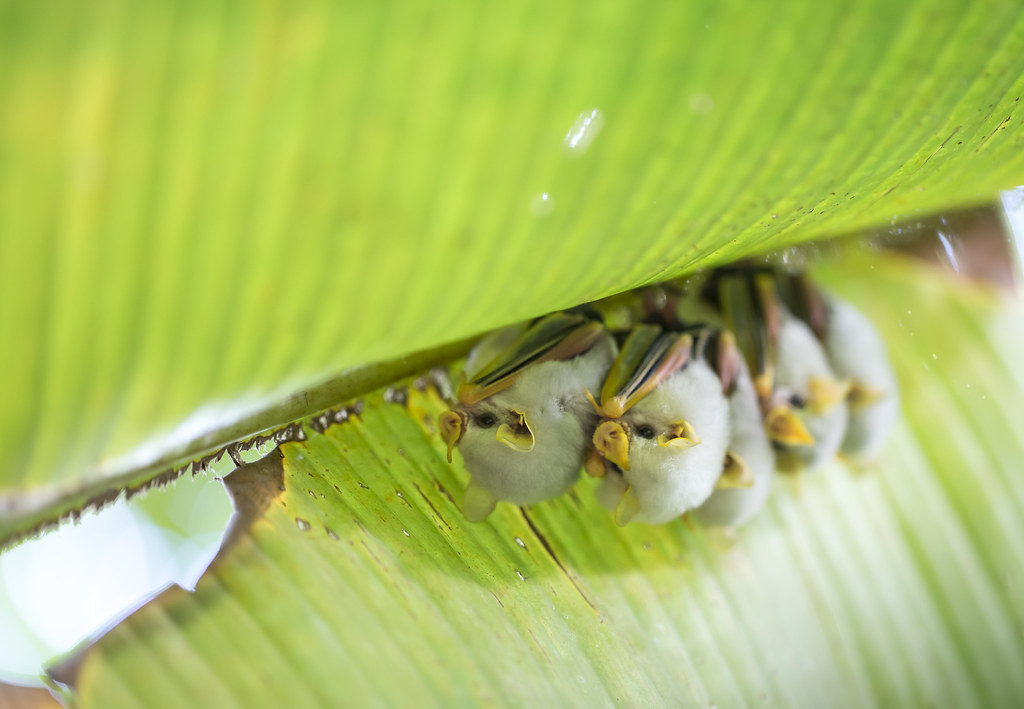The Honduran White Bat
Friday, 1 October 2021
You may just have done something of a double take. Yet these small creatures huddled together are indeed bats. They are Honduran White Bats (Ectophylla alba) and they do not easily fall in to a number of bat stereotypes: they do not live in caves and they do not suck blood. Additionally their fur, as you can see, is snow white.
It is found only in a few Central American countries. If you are very, very lucky you might be able to find it in Nicaragua, Costa Rica and, of course, the country from which it gets its name, Honduras.
Yet it is extremely rare and, moreover, it is tiny – the largest examined have never exceeded 5cm in length. Not only that, but its white fur has evolved for a reason: camouflage. (Note: the above was caught by using mist nets in Costa Rica and was later released).
Now the forests of Honduras are not renowned for their white foliage, so what trick does this particular species of bat have up its proverbial sleeve? Although it is the only example in its genus (Ectophylla) it has survived as a species so long by making tents out of the large leaves of the heliconia plant. In fact its alternative name is the Honduran Tent Bat.

Helconia leaves have long side veins which extend outwards from the center. The bats cut these veins which cause the leaves to fold down and inwards, giving the bats a tent in which to roost. As the sunlight streams through these outsized leaves, the white fur takes on a greenish tinge and the bats are, hopefully, hidden from any predators.

Although the tents are, by nature, only temporary a single colony (also appropriately known as a cloud) of the Honduran White Bat can have a number on the go at any one time so if they are disturbed they know where to head. Yet they are not overly concerned when the leaf itself is moved. They remain where they are, confident that their camouflage will protect them. If the stem of the leaf is moved, however, which could indicate the presence of a predator – they are off in a flash to an alternative but ready-made tent.

The bats that you see in these photographs are almost all female. Each colony consists of a single male with up to six females comprising his harem. Each female will have only one offspring (known as a pup) when she gives birth in the spring so although you may think the male is being a little selfish by keeping so many females he is simply trying to make sure his genes are passed down to the next generation.

It is likely that the Honduran White Bat will soon be classified as a threatened species. Let’s hope that sufficient preservation attempts are made to ensure the future survival of this unique species.
First Image Credit Wikimedia
Small inset picture Image Credit Flickr User Muchaxo
It is found only in a few Central American countries. If you are very, very lucky you might be able to find it in Nicaragua, Costa Rica and, of course, the country from which it gets its name, Honduras.
Yet it is extremely rare and, moreover, it is tiny – the largest examined have never exceeded 5cm in length. Not only that, but its white fur has evolved for a reason: camouflage. (Note: the above was caught by using mist nets in Costa Rica and was later released).
Now the forests of Honduras are not renowned for their white foliage, so what trick does this particular species of bat have up its proverbial sleeve? Although it is the only example in its genus (Ectophylla) it has survived as a species so long by making tents out of the large leaves of the heliconia plant. In fact its alternative name is the Honduran Tent Bat.

Helconia leaves have long side veins which extend outwards from the center. The bats cut these veins which cause the leaves to fold down and inwards, giving the bats a tent in which to roost. As the sunlight streams through these outsized leaves, the white fur takes on a greenish tinge and the bats are, hopefully, hidden from any predators.

Although the tents are, by nature, only temporary a single colony (also appropriately known as a cloud) of the Honduran White Bat can have a number on the go at any one time so if they are disturbed they know where to head. Yet they are not overly concerned when the leaf itself is moved. They remain where they are, confident that their camouflage will protect them. If the stem of the leaf is moved, however, which could indicate the presence of a predator – they are off in a flash to an alternative but ready-made tent.

The bats that you see in these photographs are almost all female. Each colony consists of a single male with up to six females comprising his harem. Each female will have only one offspring (known as a pup) when she gives birth in the spring so although you may think the male is being a little selfish by keeping so many females he is simply trying to make sure his genes are passed down to the next generation.

It is likely that the Honduran White Bat will soon be classified as a threatened species. Let’s hope that sufficient preservation attempts are made to ensure the future survival of this unique species.
First Image Credit Wikimedia
Small inset picture Image Credit Flickr User Muchaxo
Give a Gift
If you enjoyed this article, please consider making a gift to help Ark In Space to continue to bring you fascinating features, photographs and videos.
Thank you!









